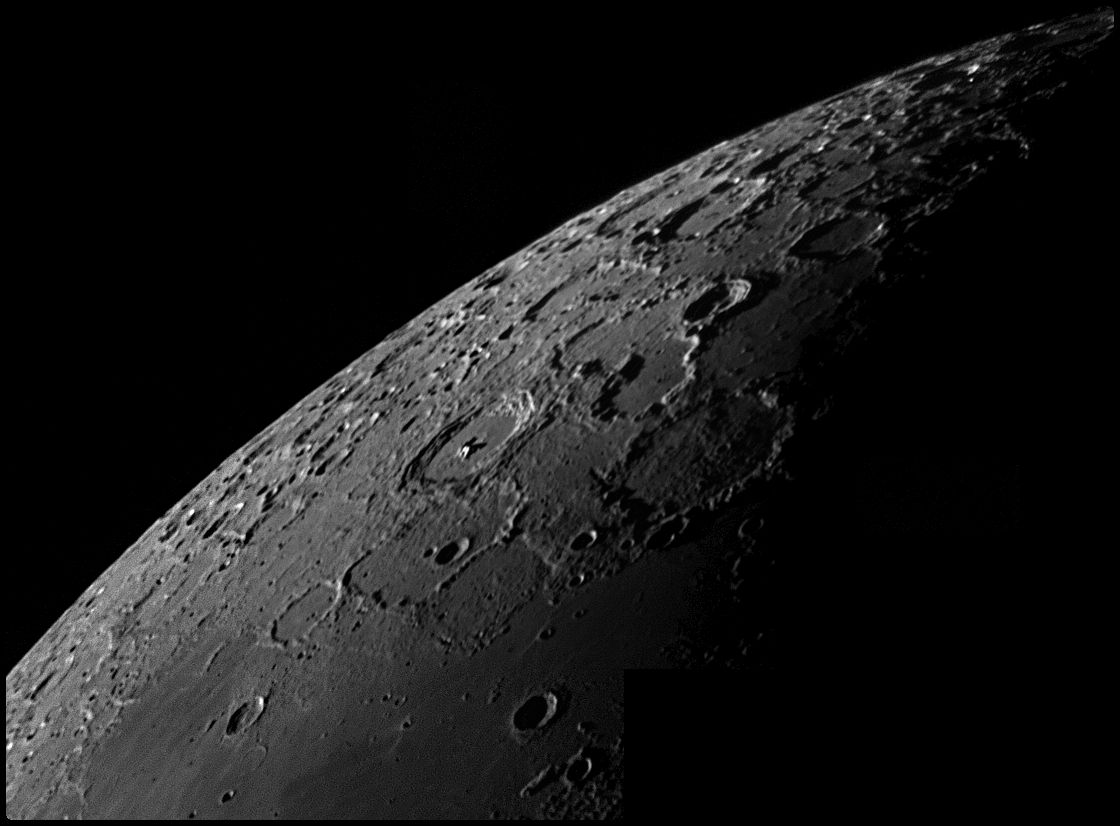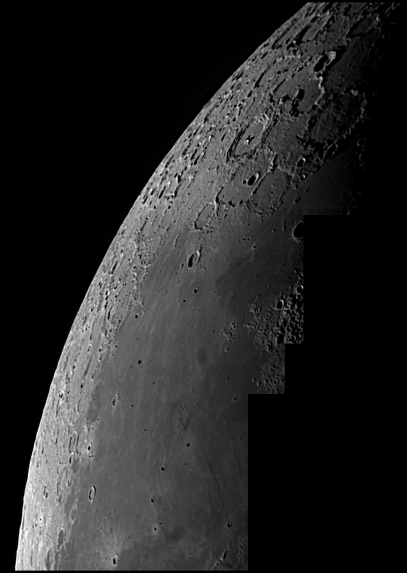

Page 5: The North West. Page 1: The South East Page 2: The East Page 3: The North East Page 4: The West Page 6: The South West.
Move your mouse over the picture to see the names of the various craters.

This is the far north-west area of the Moon imaged at a time of particularly favourable
libration for that area (Latitude 6° 46', Longitude -6° 16'). Identifying the craters in the libration zone is difficult, but the 90° west longitude passes through Brianchon and Cremona.
The picture is a composite of five images taken with a DMK camera attached to my LX200 on 22nd October 2011
at about 05:00 UT, when the Moon was 24.3 days old.
| Libration | Latitude +6° 46', longitude -6° 16' | Solar inclination | -1.1° | Lunar Phase | 244.1° | Colongitude | 212.7° | Date and Time | 22nd October 2011 05:13 and 05:17 UT | Camera | DMK 21AF04 with CLS filter | Telescope | LX200 at prime focus | Capture | ICCapture 1/1000 sec exposure, gain 1023, gamma 10 | Processing | Registax6. Multi-point alignment, 100 frames per point, Gaussian wavelets Scheme 1 |

|
This picture extends the one above further south at a time when the libration was very similar (Latitude 7° 9', Longitude -6° 52'). This picture was taken at almost exactly the same time in the lunar cycle, about 56 hours after third quarter. This means that the Sun was very high in the lunar sky over the libration zone which meant very short shadows The picture is a composite of seven images taken with an Atik-1Hs camera attached to my LX200 on 6th November 2012 at about 07:00 UT, when the Moon was 24.4 days old. Conditions were poor with a lot of high cloud so I had to use the automatic-exposure feature to compensate for the changing conditions. The picture here is reduced to 40% to fit the page. Libration: Latitude: +7° 09', longitude -6° 52' Solar inclination: -0.2° Lunar Phase: 242.9° Colongitude: 214.3° Date and Time: 9th November 2012 between 06:56 and 07:27 UT Camera: Atik 1HS with Neodymium filter Telescope: LX200 at prime focus Capture: K3CCDTools, auto exposure Processing: Registax5. Single-point alignment, ~150 frames per point. Registax6. Gaussian wavelets Scheme 9, gamma 1.4, histogram stretched as appropriate. |
Home Lunar Craters